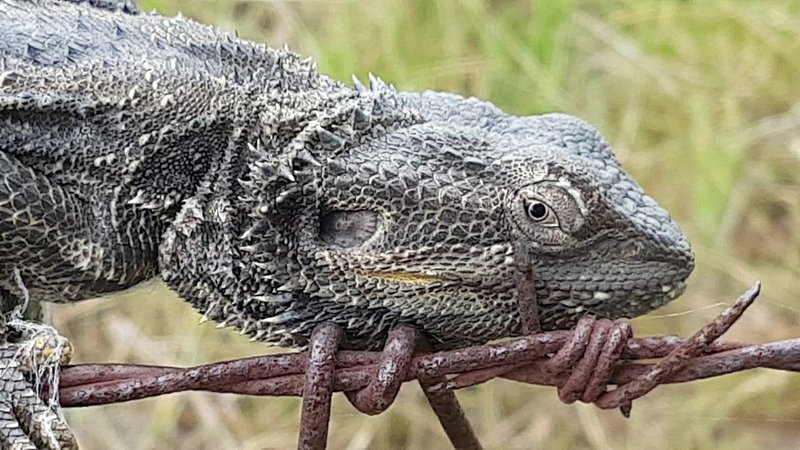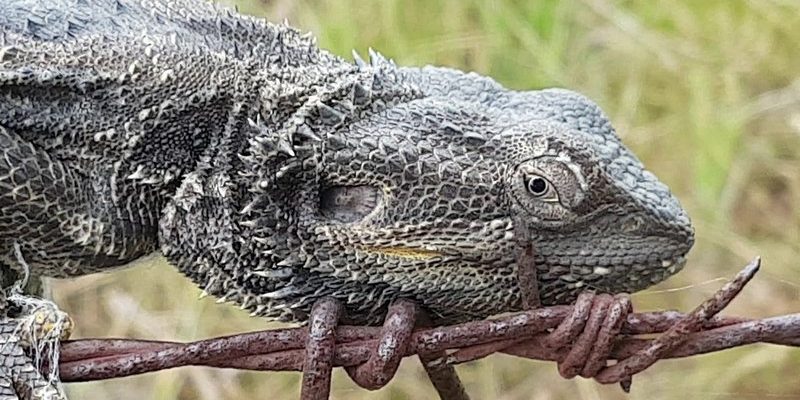
So, how do bearded dragons handle extreme temperatures and scarce resources? It’s almost like they have a trick or two up their scaly sleeves! From their physical adaptations to behavioral strategies, let’s explore how these fascinating lizards manage to not just survive, but thrive in the wild.
Physical Adaptations for Survival
One of the first things you’ll notice about a bearded dragon is its unique physical features. These adaptations play a crucial role in their survival. For instance, their flattened bodies help them absorb heat from the sun, making them efficient baskers. When temperatures soar during the day in the deserts of Australia, they can lay flat on warm rocks to maximize their heat absorption.
Additionally, bearded dragons have a specialized skin structure that helps them retain moisture. In their dry habitats, water is often scarce, so every drop counts. They can absorb water through their skin, which is somewhat rare among reptiles. This ability allows them to survive longer periods without drinking, making them well-suited to their arid surroundings.
Their thick, scaly skin also provides protection against physical harm and helps to minimize water loss. This combination of features is like having a built-in survival kit, allowing bearded dragons to adapt to some of the harshest conditions around.
Behavioral Strategies to Cope with Extreme Heat
Bearded dragons are not just physically equipped for survival; they also exhibit clever behaviors that help them cope with extreme temperatures. During the hottest parts of the day, instead of staying out in the sun, these lizards practice thermal regulation. They often seek shelter in burrows or under bushes to escape the heat.
In the mornings and late afternoons, when it’s cooler, you’ll find them basking again, soaking up the sun’s rays to recharge their energy. It’s kind of like how we enjoy lounging outside on a sunny day, but bearded dragons know when to retreat to avoid overheating.
Another interesting behavior is foraging for food during cooler times. They are primarily insectivores and will hunt for insects like crickets and worms in the morning or late evening. This strategy keeps them active without overexposing themselves to the sun during peak hours.
Water Conservation Techniques
Water conservation is a major theme in the life of a bearded dragon. Given the dry environments they inhabit, they have developed several techniques to ensure they stay hydrated without frequent access to water sources.
One way they conserve water is through minimal urination. Unlike some animals that excrete a lot of water with their waste, bearded dragons produce a semi-solid waste that contains less water, minimizing their loss of moisture.
They also tend to eat moist foods, as insects that are high in water content can help supplement their hydration needs. For instance, when they chomp down on juicy crickets, they’re not just filling their bellies; they’re also getting a bit of hydration along the way.
Additionally, bearded dragons can often be found basking after rain, making the most of the moisture in the air and the cooler temperatures. This allows them to drink from surfaces or even absorb water directly through their skin if conditions are right.
Adaptations to Food Scarcity
Like many animals, bearded dragons face challenges when it comes to finding food in their natural habitat. During dry spells, insects may be harder to come by, but these clever lizards have adapted their behavior to cope.
One of their most fascinating survival strategies is omnivorous eating habits. While they primarily eat insects, they can also consume plant material, including leaves and flowers, when insects are scarce. This adaptability allows them to exploit a wider range of food sources and helps them survive when their usual meals are hard to find.
Another strategy is their ability to store fat in their bodies. When food is abundant, bearded dragons will eat more than they need, storing energy that can sustain them during lean times. This is very much like keeping a little extra in your pantry for those days when you don’t want to run to the store.
Their hunting skills are also sharp. With keen eyesight and quick reflexes, they can spot and capture elusive prey even when it seems scarce. It’s all part of their clever design to thrive in a challenging environment.
Social Interactions and Territoriality
Bearded dragons are known for their unique social structure and behaviors. They’re generally solitary creatures, but they do have social interactions, especially during breeding season. Establishing territory is crucial, as it helps them maintain access to resources like food and basking spots.
When two males meet, they often engage in a display of dominance, which includes arm waving and head bobbing. This behavior isn’t just for show; it helps them avoid physical confrontation, allowing both lizards to keep their energy for survival. Think of it like a dance-off for dominance!
During the breeding season, males will seek out females, often displaying bright colors and puffing out their beards to attract mates. These displays are key to their reproduction, but they also enhance their social dynamics within their territory.
This social interaction can even help them adapt to their surroundings. Watching other dragons can help a young lizard learn where the best basking spots are or how to find food. That’s right—these little dragons have a social learning curve!
Bearded dragons are incredible survivors, using a mix of physical adaptations and clever behaviors to thrive in harsh environments. From their body shapes that soak up the sun to their smart water conservation strategies, these reptiles show us just how resourceful nature can be.
Their ability to adapt not only to the climate but also to food availability and social structures highlights their resilience in a challenging landscape. Understanding how bearded dragons survive in tough conditions gives us a deeper appreciation for these fascinating creatures.
So, next time you see a bearded dragon, whether in the wild or as a pet, remember the remarkable journey they’ve taken to adapt and thrive. They truly are the little dragons of the desert!

